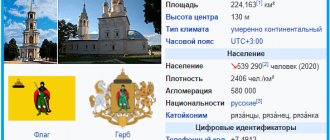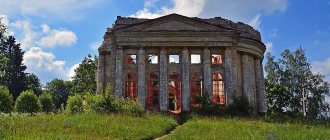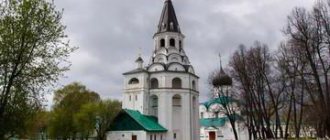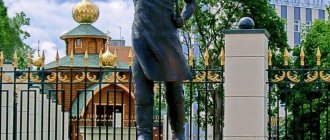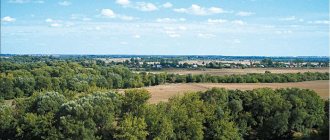Gorodets is one of the small towns in Russia. Over the centuries of its history, it has experienced periods of prosperity and decline, glory and oblivion. Gorodets was a city of ambitious princes and talented craftsmen, a city of stern Old Believers and enterprising merchants.
Gorodets stands on the high bank of the Volga, 53 km up the river from Nizhny Novgorod. Like many cities of Ancient Rus', the date of its foundation is unknown. It first appeared on the pages of chronicles in 1172 as an already existing fortified city.
The choice of the Gorodets construction site was determined by its purpose - control and protection of salt production. Salt was highly valued and was often the same equivalent to money as gold, silver and furs. The military river ships of the town residents, constantly stationed in the bays under the city, blocked the Bulgars’ path along the Volga deep into the Russian lands, and the city itself became a gathering place for Russian squads and their preparation for campaigns in the Ponizov region, a place for diplomatic meetings and negotiations of the great Vladimir-Suzdal princes with those who held power peoples between the Oka and Volga rivers.
Gorodets Fortress
Three lines of fortifications of the 12th-13th centuries, which initially formed the city’s defense system, remain a unique ancient monument in Gorodets. Such fortifications are rare not only for the Nizhny Novgorod Volga region, but also for the country as a whole. The construction of the Gorodets fortress began with the construction of a ditch and ramparts of the Prince's Mountain (Detinets) - a flat, elevated plateau of the left, here high, bank of the Volga, bounded on both sides by deep ravines. Ramparts and ditches (about 550 meters) encircled Prince Mountain in an arc, breaking off at the ends with screes towards the Volga. Detinets occupied only 3.5 hectares. The width of the base of the rampart was 22 meters, and the width of the ditch was 18 meters, with a total height of the rampart embankment of up to 7 meters. The fortress moat of Prince Mountain was 5.15 meters deep with a sharply sharpened piece at the bottom. The Gorodets ramparts were second in height only to those of Kyiv. Before the founding of Nizhny Novgorod in 1221, Gorodets was the main stronghold of the Russian princes in the Middle Volga region. Since its inception, Gorodets-Radilov has never allowed Bulgar military ships to pass along the Volga deep into Russian lands.
Gorodets Street Photo: account.travel
In February 1238, Gorodets shared the tragic fate of Vladimir Rus': it was devastated by Batu’s troops. With this event begins the history of one of the shrines of Russia - the Kostroma miraculous icon of the Feodorovskaya Mother of God. According to legend, this icon was kept in Gorodets, and after it was burned by enemies it was miraculously transported to Kostroma, where it was found again. The town residents already returned the copy of this revered icon to their city, to the monastery, later named Feodorovsky.
The history of Gorodets is connected with the name of the great Russian commander Alexander Yaroslavovich Nevsky. In the autumn of 1263, returning from the Horde to Rus', the prince fell ill and here, in Gorodets, died on November 14 (old style).
At the end of the 13th century, Gorodets became the center of an appanage principality headed by one of the sons of Alexander Nevsky, Prince Andrei. During the years of his reign, Gorodets became as prominent a political center as Tver and Moscow. Andrei Gorodetsky entered the history of Rus' as the initiator of long and brutal strife. In the winter of 1293-1294, he brought a large Horde army (“Dudenev’s army”) to Rus', with the help of which he seized the grand-ducal throne from his elder brother. Andrei Alexandrovich reigned in Vladimir for ten years. He died on July 27, 1304 and was buried in Gorodets in the Church of the Archangel Michael. With the death of Prince Andrei, the city quickly lost its former political significance.
History of the founding of the city
Gorodets is the most ancient city in Nizhny Novgorod, almost the same age as Moscow. In 1152, Yuri Dolgoruky, having crossed the ancient river Ra at the place where Unzha flows into it, reached the heights where he found the village of Maly Kitezh. There was a small monastery here where the first Russian settlers, monks, lived. Yuri founded a city here and gave it the name Gorodets - Radilov, which means Gorodets on the Volga or Volzhsky Gorodok. There is another version of the explanation for the name. In 1147, Radil was the ambassador of Prince Izyaslav Mstislavovich to the people of Kiev and spoke at a meeting at St. Sophia. Later, he apparently found himself surrounded by Yuri Dolgoruky and, when he left for the Rostov-Suzdal land, he became his confidant during the founding of Gorodets, leaving his name as a clarifying name for the ancient city for centuries.
The choice of the Gorodets construction site was determined by its purpose - control and protection of salt production. Salt was highly valued and was often the same monetary equivalent as gold, silver, and furs. The military river ships of the town residents, constantly stationed in the bays under the city, forever blocked the Bulgars’ path along the Volga deep into the Russian lands, and the city itself became a gathering place for Russian squads and their preparation for campaigns in the Ponizov region, a place of diplomatic meetings and negotiations, the great Vladimir-Suzdal princes with the peoples who held power in the area between the Oka and Volga rivers.
The initial place of origin of ancient Gorodets was the area of the Prince's Mountain. The fortress ramparts of Gorodets around Detinets and Posad had the shape of two concentric arcs, the ends of which faced the Volga. The shaft was made of pure continental sand, construction lasted 30 years, the earth had to be carried in buckets and even in hems and hats. The eastern slope of the shaft had a steepness of up to 40%. The length of the shaft was about 2100 meters. The Posad shaft had three passages with towers and gates.
Already in 1155, Gorodets became the center of the Rostov-Suzdal principality, acquiring the significance of a transshipment point on trade routes from Vladimir, Suzdal, and Rostov the Great.
At the behest of Prince Yuri Vladimirovich, the construction of the St. Michael the Archangel Cathedral, as well as the famous Fedorov Monastery, began.
Prince Yuri Dolgoruky did not rule Gorodets for long. He handed over the management of the city to his son Vasily, who was the first appanage prince of Gorodets.
Formation of Gorodets
A new stage in the history of the city began in the middle of the 14th century. In 1341, the Grand Duchy of Nizhny Novgorod arose, one of whose appanages was Gorodets. Boris Konstantinovich reigned here - an ambitious and energetic politician, an irreconcilable rival of the rising Moscow. However, neither Boris nor his descendants could stop the growth of its power.
Gorodets Photo: nnwelcome.ru
At the turn of the 14th–15th centuries, Gorodets was noticeable not only in the political, but also in the cultural life of Rus'. An outstanding master of icon painting, Elder Prokhor, came from Gorodets. In 1405, together with Theophan the Greek and Andrei Rublev, he participated in the painting of the Annunciation Cathedral in the Moscow Kremlin.
One of the last mentions of Gorodets in chronicles dates back to December 1408. Then Edigei’s army besieged Moscow, ravaged Pereslavl-Zalessky, Rostov, Dmitrov, Klin, Serpukhov, Nizhny Novgorod and “went to Gorodets and took the city, burning the whole thing with fire...”. Gorodets could not recover from this terrible invasion. Despite its former glory, it has lost its status as a city.
Since the 16th century, Gorodets has been a volost village in Yuryevetsky, then Balakhninsky district. The owners of the village over the years were the Tsar’s daughter Ksenia Godunova, Prince Lobanov of Rostov, Grigory and Vladimir Orlov, and in the 19th century part of Gorodets belonged to Count Panin.
The mansion of the merchant Petelin in Gorodets Photo: Olga Lisenkova/commons.wikimedia.org
In 1722, Peter I, traveling to Astrakhan to lay the sea route there, visited Gorodets and the Feodorovsky Monastery. Back in the 17th–18th centuries, Nizhny Novgorod, Balakhna and Gorodets became centers of shipbuilding. Gorodets carpenters were so famous for their art that Peter I called them to build warships in the village of Preobrazhenskoye. The Emperor involved Gorodets shipbuilders in the creation of the Russian fleet, which took part in the campaigns against Azov.
Gorodets in the XIV-XVI centuries
Occupying a more advantageous military-strategic and geographical position, Nizhny Novgorod had more opportunities to become the political, trade and economic center of the Volga region. And after in 1341, Gorodets began to play a secondary role as the rear fortress of the Great Nizhny Novgorod-Suzdal Principality in comparison with the capital, which was then quickly being rebuilt, where in the second half of the 14th century four stone temples were erected, the stone fortifications of the Detinets-Kremlin and wooden earthen defensive line of settlements.
Gorodets submitted to Nizhny Novgorod and was ruled mainly by the brothers of the Grand Duke. So, after the death of Andrei Konstantinovich on June 2, 1365, the struggle for the grand-ducal table unfolded between his brothers. Although, according to seniority, the table should have belonged to Dmitry Konstantinovich, power was seized by his younger brother Boris. Neither the admonitions of the princess mother, nor the demands of Metropolitan Alexy, nor the closure of the Nizhny Novgorod churches as punishment for the disobedient by Sergius of Radonezh, specially sent from Moscow, helped. Only the Suzdal-Moscow regiments led by Dmitry Konstantinovich turned out to be a convincing argument. Boris had no choice but to submit to the force, thanking his older brother for the inheritance allocated to him. In the face of constant threats of Mongol-Tatar raids, peace and cooperation were beneficial to both. In the summer of 1367, the Horde prince Bulak-Temir invaded the southern regions of the Nizhny Novgorod lands right up to the Sundovika River. The united Nizhny Novgorod-Gorodets squad, led by both prince-brothers, managed not only to stop the devastation of the region, but also drove back the Tatars.
In 1370, the townspeople, led by their prince Boris, raided the Bulgarian lands subject to the Horde. Unable to resist the Nizhny Novgorod army, the Bulgar prince Osan tried to pay off with gifts, but was still forced to cede power to a supporter of Russian orientation, Prince Saltan. The Gorodets army also took part in the successful campaign of 1375 against Tver, organized by the Moscow Grand Duke Dmitry Ivanovich, the future Donskoy.
True, in the current conditions, the opportunity arose for the not ruined Gorodets to somewhat increase its importance as the political and spiritual center of the region, especially since Dmitry Konstantinovich, who had survived such a strong shock, was fading away right before our eyes and, it seemed, his days were numbered. In an effort to intercept the label for the Nizhny Novgorod-Suzdal reign from his weak brother, Boris went “to the Horde from his Gorodets.” However, Khan Tokhtamysh was in no hurry. He did not want to take away the label from the living Dmitry Konstantinovich and only after his death on July 6, 1383, he transferred “the reign of Nizhny Novgorod to Prince Boris.” After which the Gorodets inheritance became the object of the struggle of the princely sons Dmitry and Boris Konstantinovich.
In 1388, the son of Dmitry Konstantinovich Vasily managed to beg Gorodets as his inheritance from the Horde, which displeased Boris, and this, in turn, led to the appearance of the Gorodets army, reinforced by the squads of Mozhaisk, Zvenigorod and Volok. Having surrounded Nizhny Novgorod, the combined troops of Dmitry Konstantinovich’s sons Vasily and Semyon did not allow residents and merchants into the city for five days. Thus, Gorodets received some administrative independence. But not for long. Soon it was ceded to Moscow's worst enemy, Mikhail Aleksandrovich Tverskoy. In an effort to contrast Gorodets with Nizhny Novgorod, which since 1392 became part of the Grand Duchy of Moscow, Mikhail Alexandrovich tried in every possible way to raise its authority: he erected the main city St. Michael the Archangel Cathedral of stone, for the illumination of which on November 8, 1398 the Tver Bishop Arseny was sent here. But after the death of Mikhail Alexandrovich in 1399, Gorodets, according to a spiritual will, passed first to his son Ivan, and then through an exchange into the estate of Dmitry Donskoy’s friend and comrade-in-arms, Vladimir Andreevich Serpukhovsky (1353-1410), whose whole life was devoted to the rise of Moscow and the fight against its enemies .
Gorodets of that time was not only an important military-strategic point, but also a major cultural center of North-Eastern Rus'. We can assume that Gorodets had its own chronicle in the 14th century, and in Moscow, together with the famous painters Theophanes the Greek and Andrei Rublev, who painted the Kremlin Annunciation Cathedral in 1405, Prokhor from Gorodets, who stood on a par with the most famous icon painters of Rus', was named which not only ancient Gorodets, but our entire country can be proud of.
It is difficult to predict the possible nature of the further historical development of Gorodets in the 15th century, if not for the invasion of the army of the Horde khan Edigei. In 1408, the city was burned to the ground by the Tatar Khan Edigei, who was heading to Moscow from Kazan. The defeat was so great that for almost 150 years Gorodets remained desolate: it was then called “Empty Gorodets”. And in 1536 the Kazan Tatars attacked.
Gorodets merchant
The heyday of Gorodets came in the second half of the 19th century and the beginning of the 20th century - during the era of rapid development of Russian capitalism. Gorodets quickly became rich in shipping, shipbuilding, and trade. Thanks to wintering in the local backwater of ships loaded with grain, the flour-grinding industry and grain trade flourished in the city. At the same time, Gorodets became a major center for the sale of handicrafts. In the surrounding villages they made pottery, horse bows, sleighs, and children's toys. Here, in the 1870s, narrative painting on spinning wheels appeared - the famous Gorodets painting.
By the end of the 19th century, Gorodets had changed. In the mountainous part, rich houses stood on the Volga embankment and Kupecheskaya Street (now Lenin). Below, under the Trinity Cathedral, Bolshaya Street stretches along the river with shopping arcades, shops and shops.
After the October Revolution, in 1933 Gorodets received the status of a district town. However, socialist transformations broke the economic structure, and “Merchant Town” became a thing of the past.
Eight and a half centuries is an honorable age. But Gorodets is an ancient and young city at the same time. Having visited it once, you will definitely love it and return here more than once.
Famous townspeople
City residents are proud of their glorious fellow countrymen:
- Ivan Gavrilovich Blinov is an artist and calligrapher, he wrote many books in Old Russian handwriting and created many paintings.
- A.A. Smirnov is a writer who began his literary career in Gorodets.
- V. Yakhontov is an actor, a master of artistic reading. His childhood and youth were spent in Gorodets.
- V.F. Vasiliev - Honored Artist of the RSFSR.
- A.S.Vedernikov is a famous Soviet artist.
- A.V. Vorozheikin - twice Hero of the Soviet Union.

